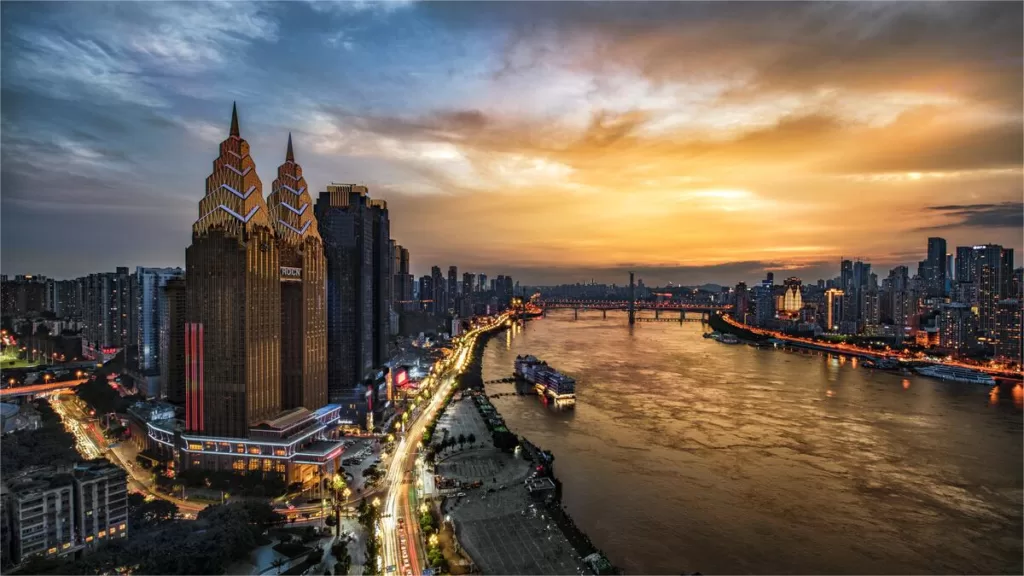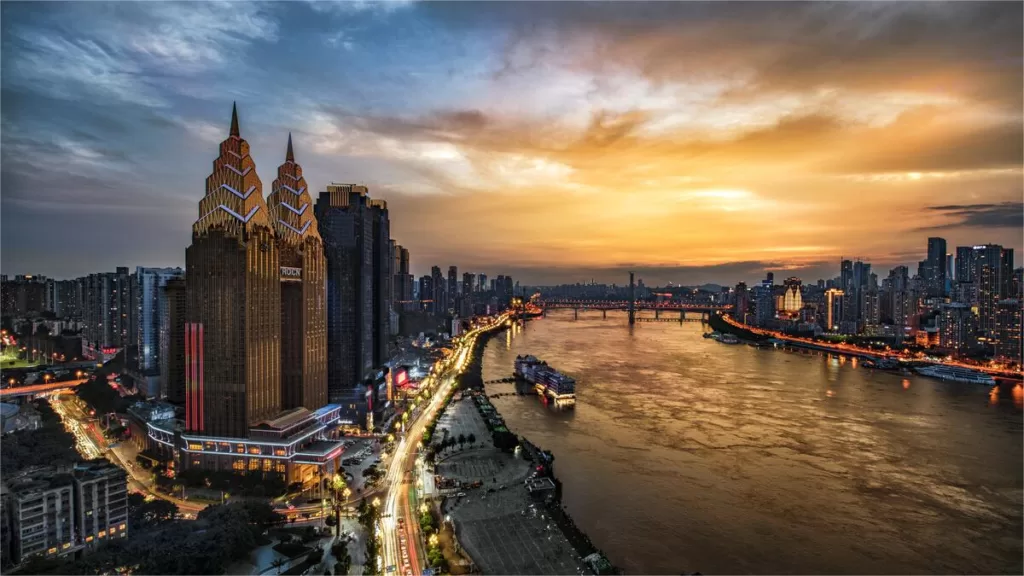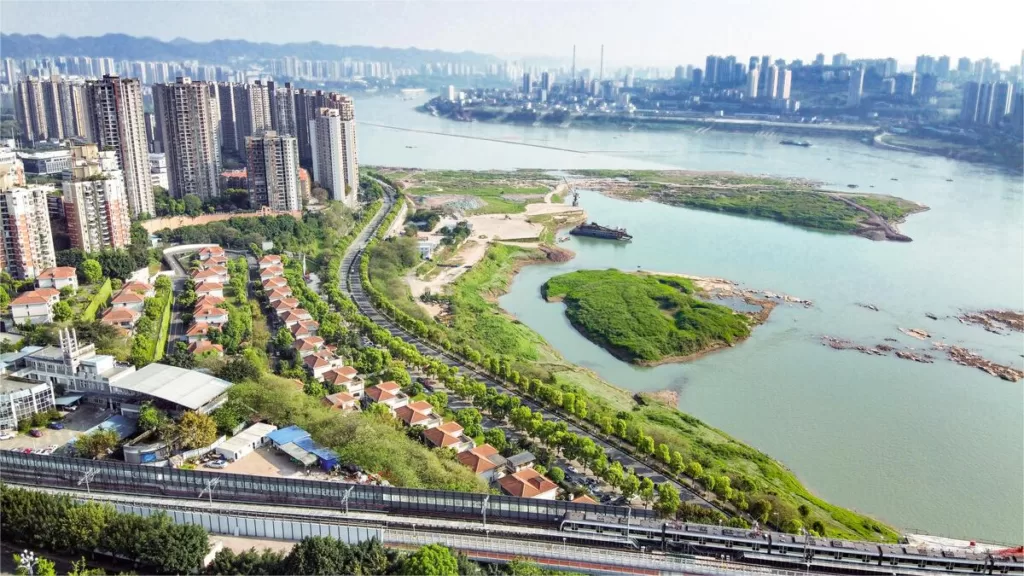Nanbin Road, Chongqing – Location, History and Highlights


Nanbin Road (南滨路), situated in the heart of Chongqing, China, is a captivating urban thoroughfare that runs alongside the majestic Yangtze River, with the lush South Mountain as its backdrop. This 25-kilometer-long boulevard is renowned for offering some of the most breathtaking night views of the city’s central district, often compared to the famed Bund in Shanghai. However, Nanbin Road has its unique charm, steeped in a rich tapestry of historical and cultural significance, making it an integral part of Chongqing’s identity.
The name “Nanbin Road” translates to “South Bank Road,” and its significance in Chongqing’s history cannot be overstated. It is a place where multiple cultural heritages converge, creating a unique blend of Chongqing’s history and modernity. This road has earned the moniker of “Chongqing’s Bund,” and it’s not hard to see why.
Table of Contents
- Location and Transportation
- Cultural Heritage Along Nanbin Road
- Development and Features of Nanbin Road
- Historical Timeline of Nanbin Road
- Nanbin Road: A Venue for International Events
- Video about Nanbin Road
- Attractions along Nanbin Road
Location and Transportation
Nanbin Road is centrally located in the Nanan District of Chongqing, China. It is a picturesque and culturally rich area that offers stunning views of the Yangtze River and is renowned for its historical significance and vibrant atmosphere. To reach Nanbin Road, there are several convenient transportation options available:
- By Bus – Route 375: You can take Bus Route 375, which will drop you off at Nanbin Road Bridge. This route provides direct access to Nanbin Road, allowing you to start your exploration right from the bridge area.
- By Bus – Routes 338, 353, 373: Another convenient option is to take Bus Routes 338, 353, or 373, and alight at the intersection of Nanbin Road and Xiaoyue Road. From this intersection, you can easily walk to various attractions along Nanbin Road.
- By Bus – Route 872: If you’re looking to explore the delightful culinary scene of Nanbin Road, you can take Bus Route 872, which will take you to Nanbin Road Food Street. This is an excellent choice for those seeking to savor the local flavors and indulge in Chongqing’s famous cuisine.
Cultural Heritage Along Nanbin Road

The cultural heritage along Nanbin Road is a testament to Chongqing’s diverse and storied past. The road is dotted with remnants of various cultural epochs, making it a treasure trove for history enthusiasts. The following cultural facets can be explored along this iconic route:
Ba-Yu Culture: Nanbin Road serves as a living museum of Ba-Yu culture, which is the ancient name for the Sichuan and Chongqing region. The road’s historical significance harks back to the time when Chongqing was a vital trading post and gateway to the west.
Religious Culture: Temples and religious sites can be found along Nanbin Road, reflecting the spiritual diversity of Chongqing. These places offer a glimpse into the city’s religious practices and beliefs.
Port Culture: Due to its proximity to the Yangtze River, Nanbin Road played a pivotal role in the maritime and port culture of Chongqing. This heritage is evident in the architectural remnants and maritime history museums that line the road.
War Remnants: The road also bears witness to the tumultuous times of World War II. Some sections of Nanbin Road still exhibit remnants of that era, serving as a solemn reminder of the sacrifices made during the war.
Cultural Festivals: Throughout the year, Nanbin Road hosts a variety of cultural festivals that showcase Chongqing’s vibrant heritage. From food festivals highlighting Chongqing’s famous hotpot to international cultural events, there is always something exciting happening here.
Development and Features of Nanbin Road

Nanbin Road is not just a historical relic but a thriving modern urban hub that seamlessly blends heritage preservation with contemporary urban development. The road spans approximately 25 kilometers and covers an area of 160,000 square meters. It serves multiple functions, making it an integral part of Chongqing’s urban landscape:
Flood Control and Riverbank Protection: Nanbin Road plays a crucial role in flood control and riverbank protection along the Yangtze River, safeguarding the city against the annual monsoon floods.
Urban Thoroughfare: It serves as a vital city road, facilitating transportation and connectivity within Chongqing.
Urban Renewal: Nanbin Road has been a focal point for urban renewal efforts, with various redevelopment projects aimed at preserving its historical charm while modernizing its infrastructure.
Leisure and Entertainment: Beyond its practical functions, Nanbin Road offers a plethora of leisure and entertainment options. Restaurants, bars, and recreational spaces dot the road, making it a popular destination for both locals and tourists.
Historical Timeline of Nanbin Road

In March 1890, the Qing government signed the “Treaty of Yantai with Additional Articles,” granting privileges for the opening of Chongqing to foreign trade. This marked the beginning of Chongqing’s significance as a trading port.
In 1891, the first customs inspection station in western China was established at the foot of Lion Mountain on the southern bank of the Yangtze River.
During the wartime period, the General Administration of Customs of China continued to operate at No. 70 Hailong Road.
In 1915, the British company Butterfield & Swire (known as the “Bullock” company) opened its office at the intersection of Wuchuan Road and Nanbin Road.
The first phase of Nanbin Road’s redevelopment was completed from the southern end of Chongqing Yangtze River Bridge to Danzishi in the early 2000s, spanning 7.8 kilometers.
In 2006, the second phase extended from the southern end of Chongqing Yangtze River Bridge to E’gongyan Bridge, covering approximately 4.4 kilometers.
The third phase of Nanbin Road extends from Danzishi to the Dafosi Bridge on the southern bank of the Yangtze River, totaling 2.84 kilometers. The entire Nanbin Road now spans 18 kilometers.
Nanbin Road: A Venue for International Events

Nanbin Road’s unique blend of history and modernity has also made it a venue for prestigious international events. In 2011, the Chongqing International Marathon took place along Nanbin Road, featuring a picturesque route that meandered along the Yangtze River, crossing seven major bridges. This event marked the perfect fusion of elegance and athleticism, establishing Nanbin Road as China’s most beautiful marathon track.
Beyond athletic competitions, Nanbin Road has hosted various cultural events, including the Asia-Pacific Mayors’ Summit fireworks display in 2005, the Toulouse Cultural Festival as part of the China-France Cultural Year, sand sculpture festivals, Spring Lantern Festivals, the 11th Chongqing Urban Tourism Festival, and even the Chongqing Beer Festival. These events reflect the road’s vibrant cultural scene and its role as a dynamic cultural hub within the city.
Video about Nanbin Road
Attractions along Nanbin Road

Nanbin Park

The Chongqing Changjiang Museum of Contemporary Art

Ciyun Temple
Attractions in Chongqing downtown, Attractions in Nanan District Chongqing, Chongqing local life